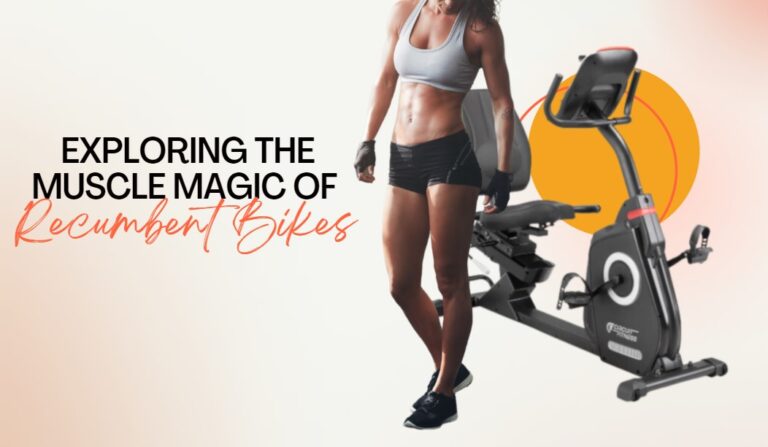The recumbent bike is like the lounge chair of the fitness world, offering a unique design that combines comfort with effective exercise. Unlike traditional upright bikes, the recumbent bike features a reclining design that encourages better spinal posture, reduces stress on the joints, and provides a great workout, all while letting you feel like you’re just hanging out. But what muscles does a recumbent bike work? It’s time to demystify this fitness machine and understand its impact on our musculature.
Getting to Know Your Recumbent Bike
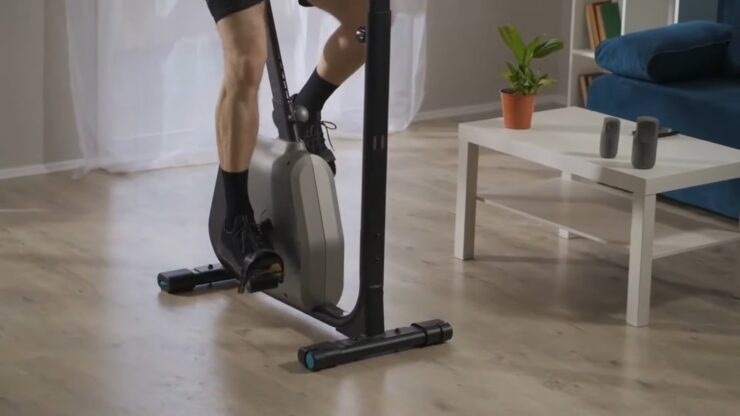
Before we delve into the muscles targeted by the recumbent bike, let’s understand its design. Picture a bike turned laid-back: that’s your recumbent bike. With a reclined body-seated position, it takes the weight off your upper body, allowing your legs to do the majority of the work while your back and arms relax. This design promotes a natural alignment of your body, minimizing strain and maximizing exercise efficiency.
Pedaling Power: The Lower Body Workout
The recumbent bike is a lower-body powerhouse. When you start pedaling, you are primarily engaging your lower body muscles, which include quadriceps, hamstrings, glutes, and calves.
- Quadriceps: These are the large muscles at the front of your thigh. Every time you push the pedal down, you’re giving your quads a good workout. The more resistance you add, the harder they work.
- Hamstrings: Located at the back of your thigh, these muscles engage when you pull the pedal up. They work in conjunction with your quadriceps to provide a balanced leg workout.
- Glutes: Your gluteal muscles (gluteus maximus, medius, and minimus) are situated in your buttocks. They get a solid workout when you’re pushing the pedals, especially if you increase the resistance.
- Calves: Your gastrocnemius and soleus muscles in your lower leg get involved as you flex and extend your ankle during the pedaling motion, providing a good calf workout.
Core Engagement: The Silent Workout
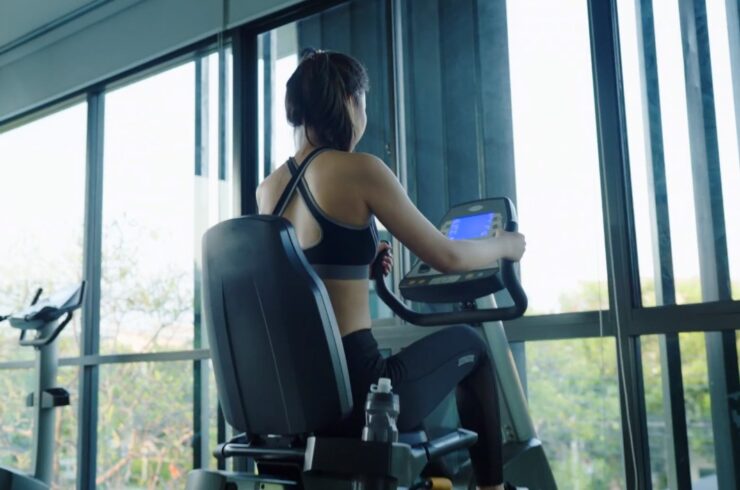
While the recumbent bike is known for its lower body workout, it also quietly works on your core muscles. These include the abs, obliques, and lower back muscles.
- Abs: Your rectus abdominis (the “six-pack” muscle) and transverse abdominis (the deepest abdominal muscle) engage to stabilize your body during pedaling. This is a subtle engagement, but it contributes to your overall core strength and stability.
- Obliques: These are the muscles at the sides of your abdomen. They work along with your abs to keep your body stable, especially when you’re pedaling hard.
- Lower back: Your lower back muscles, specifically the erector spinae, work in tandem with your abs and obliques to maintain your posture and balance.
Upper Body Involvement: An Unexpected Bonus
While the recumbent bike is not primarily an upper body workout machine, some models come with moving handles or bands that provide a full-body workout. When using these, you engage the biceps, triceps, shoulders, and even some back muscles.
- Biceps and Triceps: As you push and pull the handles, you engage your bicep and tricep muscles, providing a well-rounded arm workout.
- Shoulders: When you pull the handles towards you, your deltoids (shoulder muscles) are activated.
- Back Muscles: Depending on the range of motion, some back exercises on the recumbent bike can engage the latissimus dorsi (the broadest muscle on the back) and the rhomboids (located in your upper back).
Getting the Most Out of Your Recumbent Bike Workout
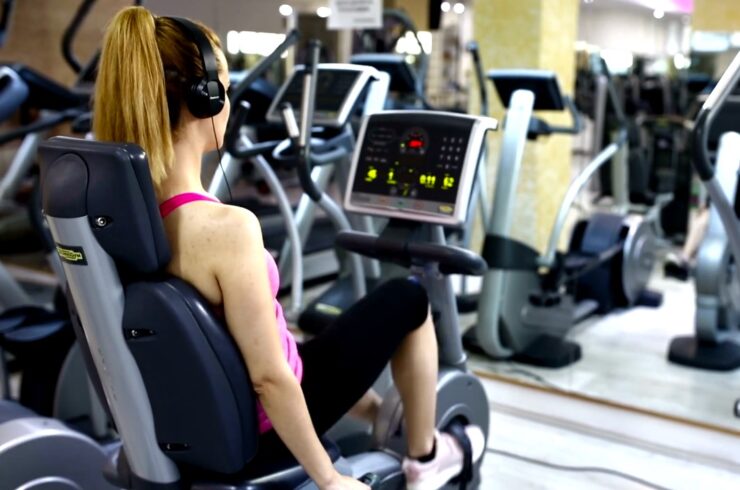
Knowing which muscles are involved is just half the story; the key to getting a great workout lies in how you use the recumbent bike. Here are some tips:
- Adjust Your Bike: Ensure your bike is set up correctly. Your legs should be slightly bent when the pedals are at their furthest point. If your legs are fully extended or overly bent, adjust the seat.
- Vary the Resistance: The bike’s resistance directly impacts the intensity of your workout. Higher resistance levels will work your leg and glute muscles harder, simulating an uphill ride. Lower resistance can be used for longer, endurance-based workouts.
- Maintain Proper Form: Keep your back against the seat, engage your core, and keep your shoulders relaxed. Your hands should be relaxed on the handles, not gripping them tightly. This will ensure you’re working the right muscles and avoiding unnecessary strain.
- Add Intervals: Intervals, where you alternate between high intensity and lower intensity, can help increase the overall effectiveness of your workout, challenging both your muscles and your cardiovascular system.
Recumbent Bikes: A Beneficial Exercise for All
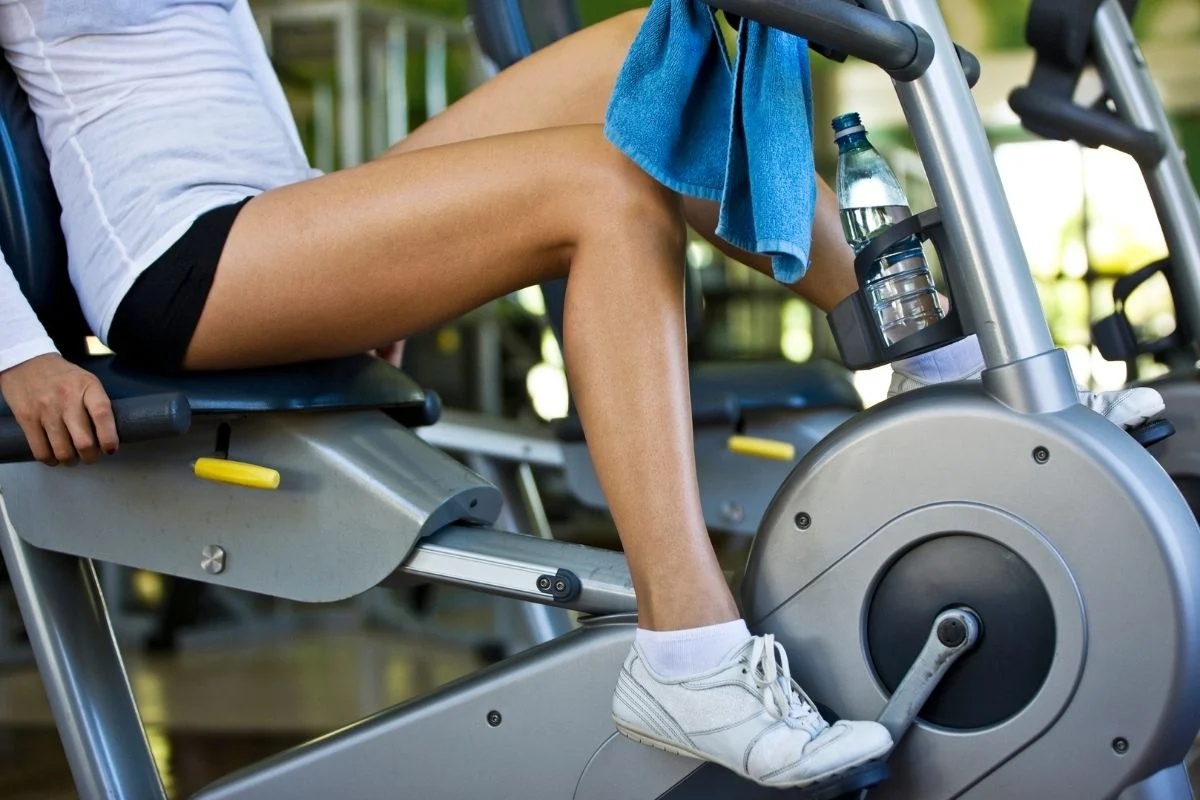
From the fitness newbie to the seasoned athlete, the recumbent bike is a versatile tool that can be adapted to various fitness levels and needs. Its low-impact nature makes it a popular choice for those recovering from injuries, older adults, and those new to exercise. At the same time, the ability to adjust resistance levels allows for challenging workouts that can benefit even the most athletic individuals.
The recumbent bike targets a variety of muscles, providing a well-rounded workout. The primary focus is on the lower body, working the quadriceps, hamstrings, glutes, and calves. The core muscles, including the abs, obliques, and lower back, are also engaged, promoting better posture and balance. And with some models offering moving handles or resistance bands, the upper body can also get a workout.
The Cardiovascular Impact
In addition to the numerous muscles that recumbent bikes work, it’s essential to acknowledge their cardiovascular benefits. Regardless of the muscles targeted, any physical exercise that raises your heart rate will help improve cardiovascular health. Regular recumbent bike workouts can increase heart strength, lung capacity, and overall stamina, making it an excellent choice for both aerobic and anaerobic training.
Recumbent Bikes and Weight Loss
Another reason to pedal on recumbent bikes is the potential for weight loss. Although the primary muscles worked are in the lower body, the cardiovascular nature of the exercise means you’re burning calories. Depending on your workout intensity and duration, you can burn several hundred calories in a single session, contributing to a calorie deficit and weight loss over time. Plus, as you build muscle mass from consistent cycling, your resting metabolism may increase, further supporting weight loss.
Recumbent Bikes and Rehabilitation
Recumbent bikes provide a safe environment for rehabilitation exercises. Their design offers excellent stability, and the workout is low-impact, meaning it doesn’t put excessive stress on the joints. This makes it an ideal option for anyone recovering from an injury, particularly in the lower body, as it allows for gradual strengthening of the muscles around the injured area. Furthermore, the adjustability of the resistance level enables users to customize their workouts based on their recovery stage.
Improving Mental Health with Recumbent Bikes
Last but not least, let’s talk about the mental health benefits of using a recumbent bike. Regular exercise has been linked to improved mood and reduced stress levels, largely due to the release of endorphins, the body’s natural “feel-good” hormones. The comfortable design of recumbent bikes may encourage more consistent workouts, thus promoting these mental health benefits.
Moreover, recumbent biking can be a meditative activity. The rhythmic, repetitive motion of pedaling, coupled with focused breathing, can help clear the mind and reduce anxiety. For those who prefer a more engaging experience, many modern recumbent bikes come with features like virtual trails or connectivity to streaming services, allowing for enjoyable distractions while exercising.
Final Words
The recumbent bike is a versatile piece of exercise equipment that provides a plethora of benefits, from working various muscle groups to improving cardiovascular health, aiding in weight loss, and even supporting mental well-being. Whether you’re a fitness enthusiast looking for a new challenge, someone seeking a low-impact workout option, or a patient in rehabilitation, the recumbent bike could be a great addition to your fitness journey. So, why not give it a try? After all, who said getting fit couldn’t be comfortable?

